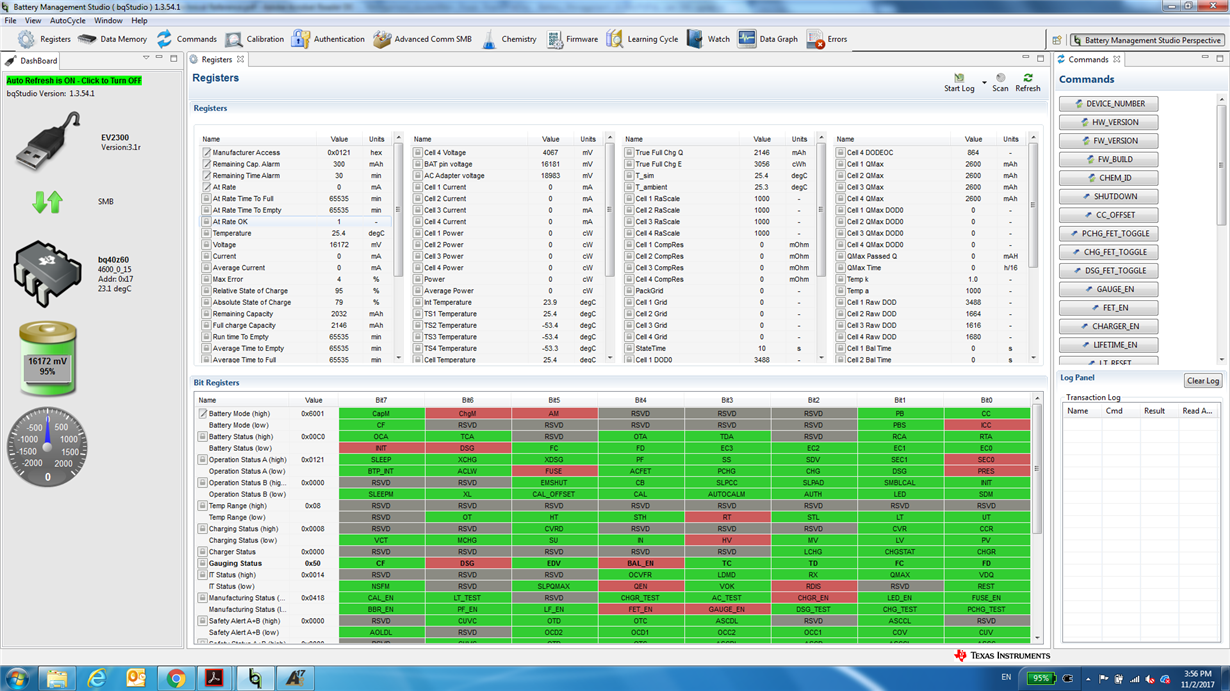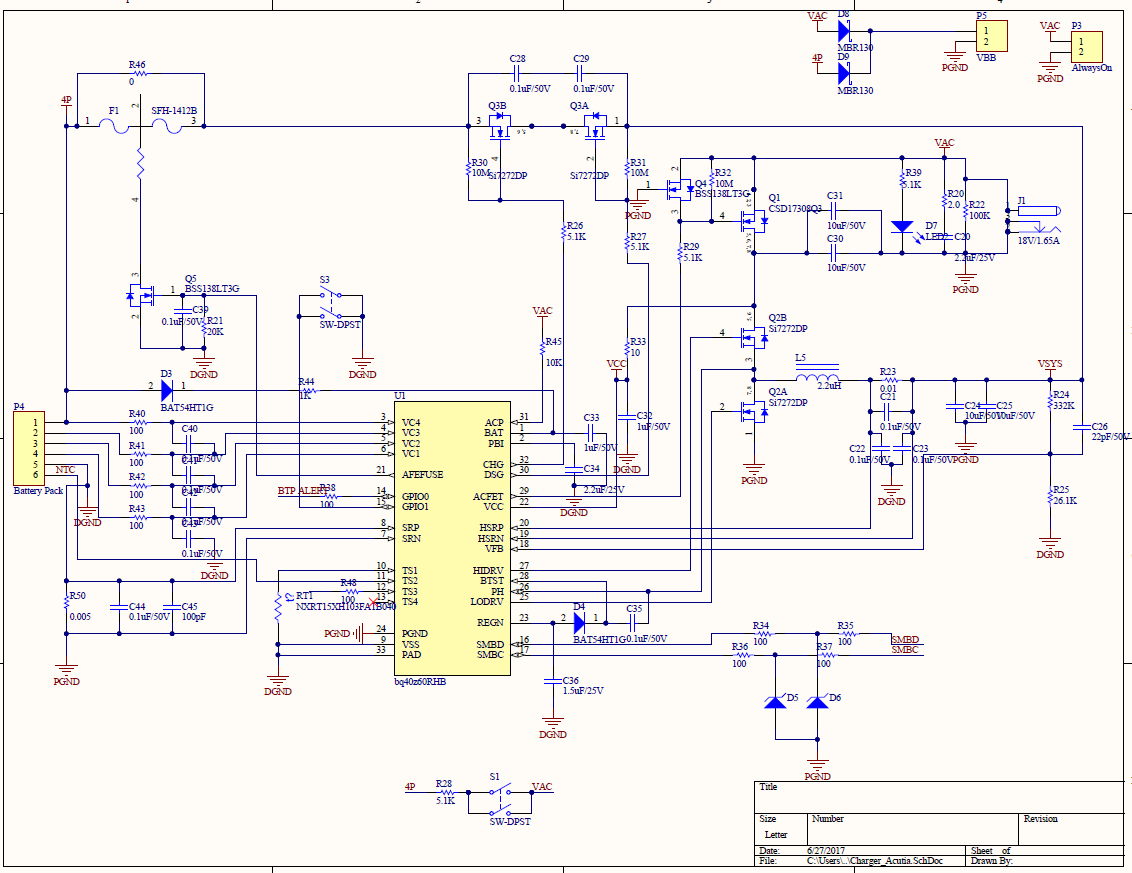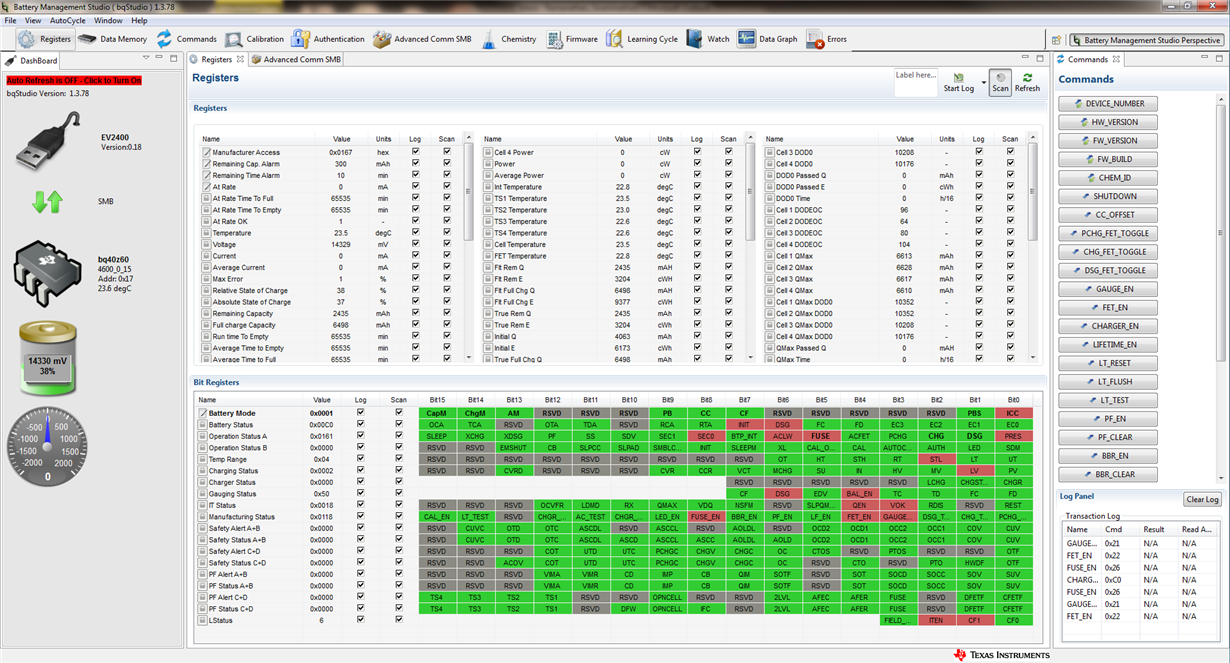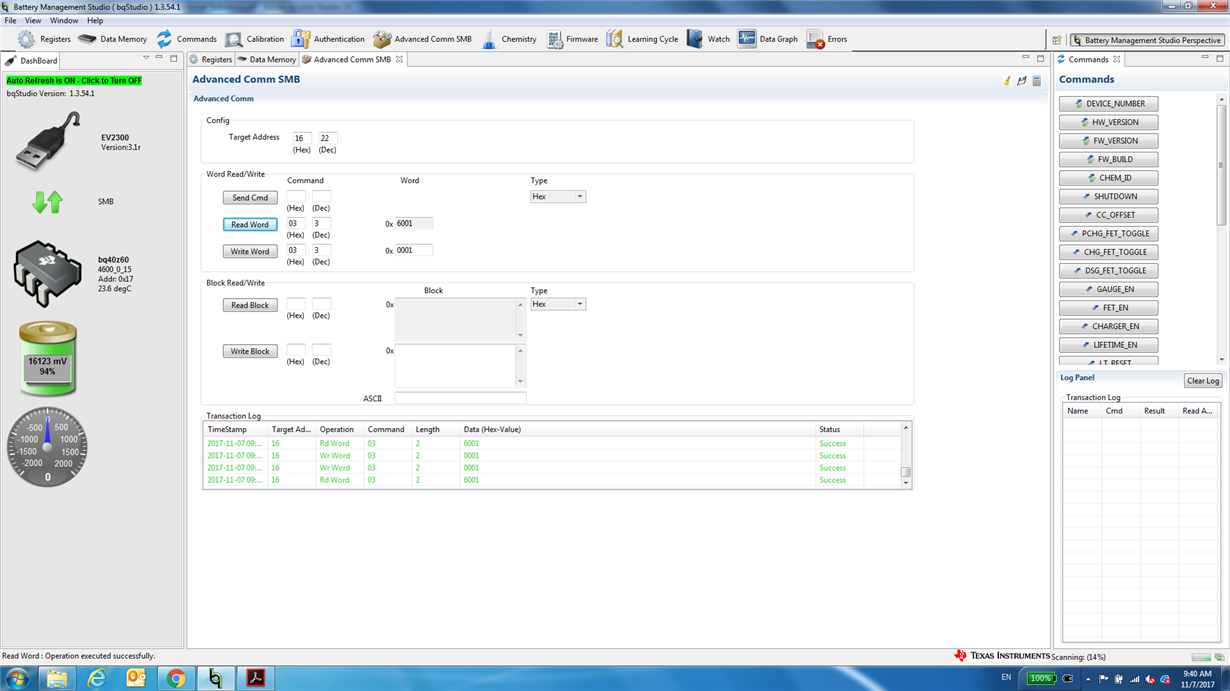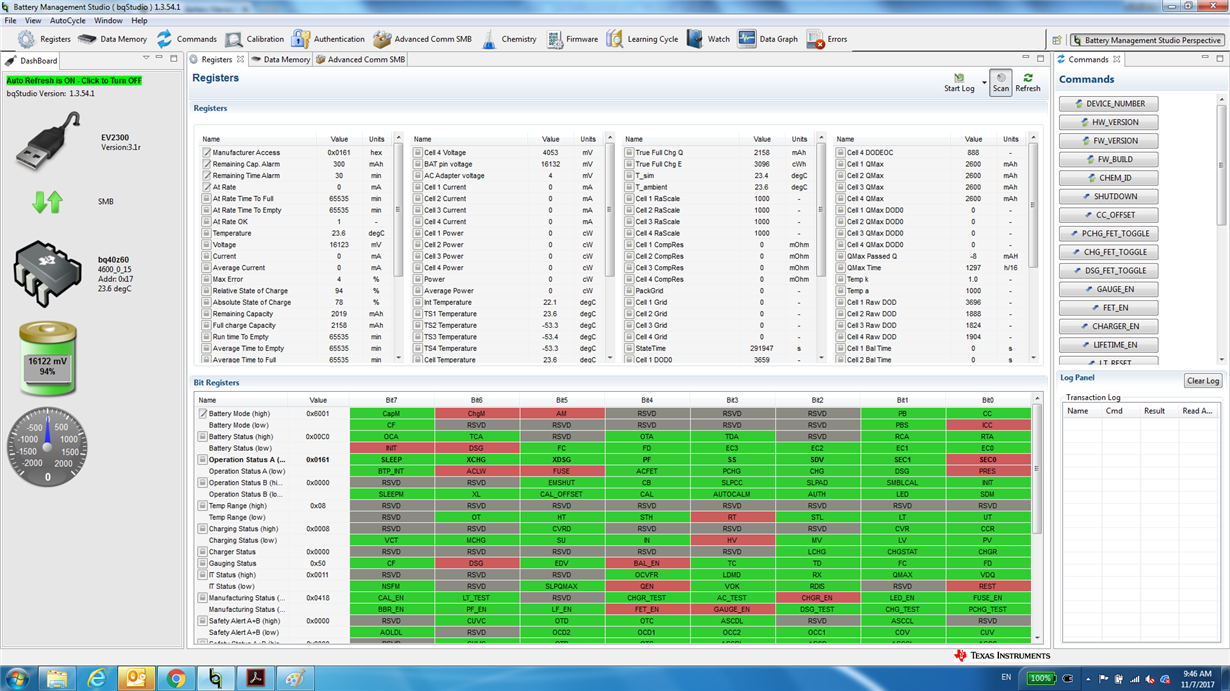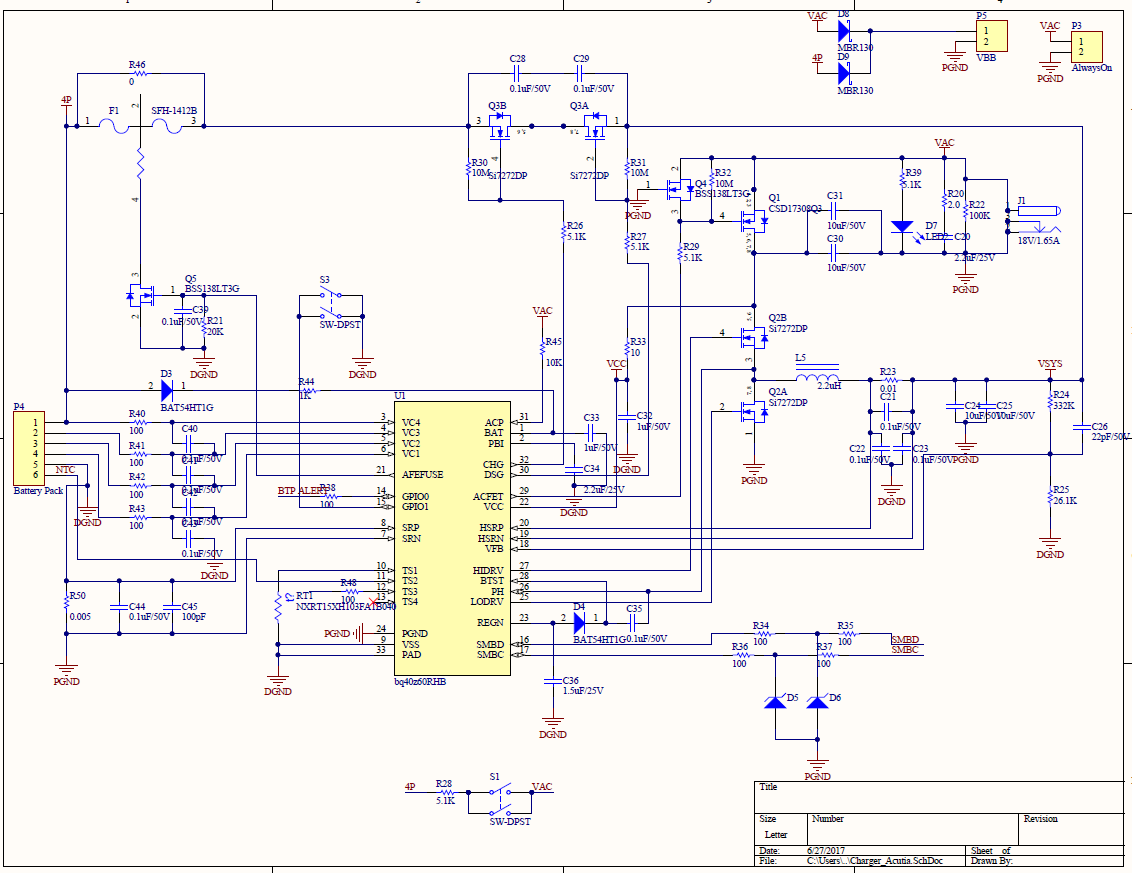Other Parts Discussed in Thread: CSD17308Q3
Hi There,
We've just finished our prototype for 4-cell(18650) solution.
Here is the setup:
DC INPUT: 19V/1.6A
Battery: 4-cell in serial (18650)
Currently, the output voltage is zero. If you look at the register status, FUSE is asserted, but the voltage of PIN 21 is 0. And it looks the DSG is enable, but the voltage of PIN30 is also zero(Source and Drain of Q3B are close to 16V).
BTW, in the schematic, I didn't solder the FUSE(F1). I used a ZERO resistor instead.
I also inculded the SREC file for your reference.unable to discharge_customized board.zip


